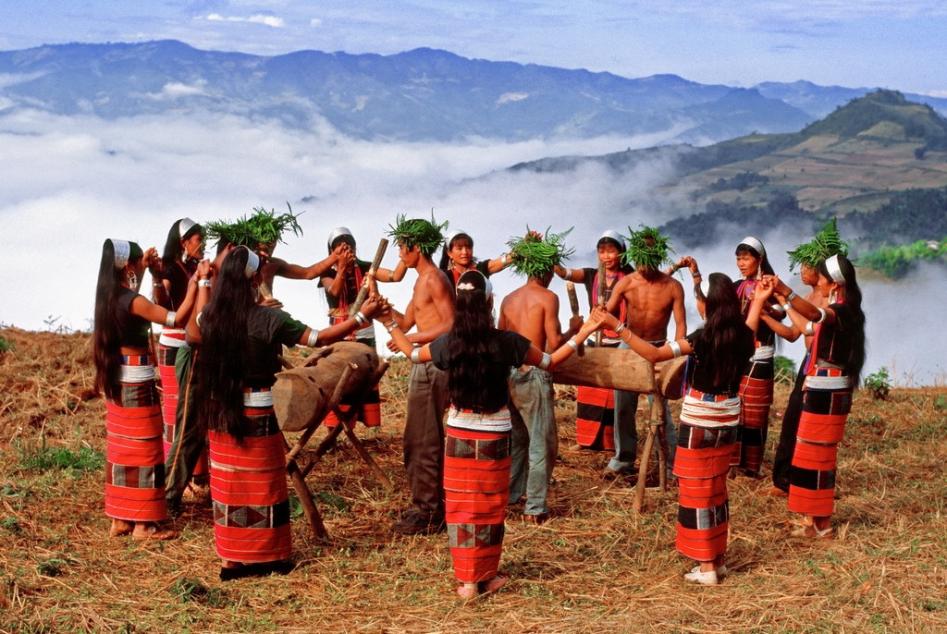



The Va ethnic minority, with a population of 396,610, lives in Ximeng, Cangyuan, Menglian, Gengma, Lancang, Shuangjiang, Zhenkang and Yongde counties in southwestern Yunnan Province. Some are found scattered in the Xishuangbanna Dai Autonomous Prefecture and the Dehong Dai-Jingpo Autonomous Prefecture. Ximeng and Cangyuan counties are the main places where the Va people live in compact communities. In the areas where the Va people live, there are also Hans, Yis, Dais, Hanis, Lahus, Jingpos, Blangs, De'angs and Lisus.
Ximeng, Cangyuan, Menglian and Langcang are situated between the Lancang and Nu rivers, blocked by undulating mountain ridges some 2,000 meters above sea level. Traditionally this area was called the Ava hilly region.
With a subtropical climate, the fertile Ava region has plentiful rainfall and only 40 frost-free days a year. It is suitable for the growth of dry rice, paddy, maize, millet, buckwheat, potatoes, cotton, hemp, tobacco and sugarcane, as well as such subtropical fruits as bananas, pineapples, mangoes, papayas and oranges.
The Va language belongs to the Austroasiatic family. Before the founding of the People’s Republic of China in 1949, except for some parts of the area where an alphabetic script was used, the Va people had no written language, and they kept records and accounting or passed messages with material objects or by engraving bamboo strips. Each strip ranged from half an inch to an inch in width. Objects used implied specific meaning or feelings. For instance, sugarcane, banana or salt meant friendship, hot pepper anger, feather urgency, and gunpowder and bullets the intention of clan warfare. An alphabetic script was created for the Va people in 1957.
You will only receive emails that you permitted upon submission and your email address will never be shared with any third parties without your express permission.
